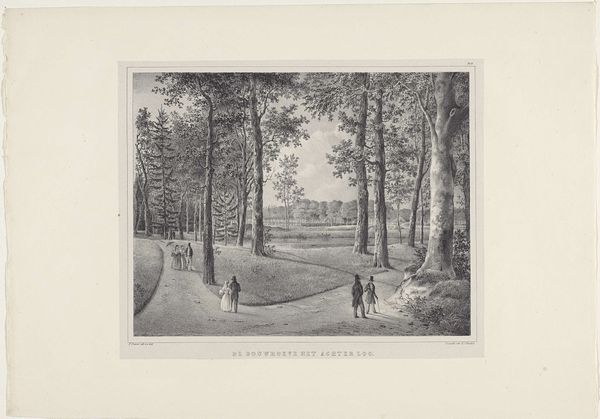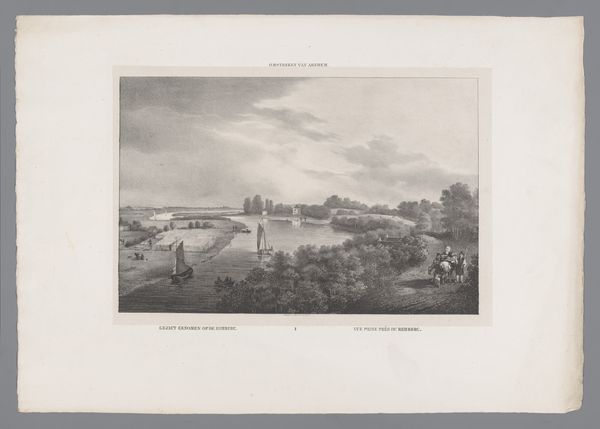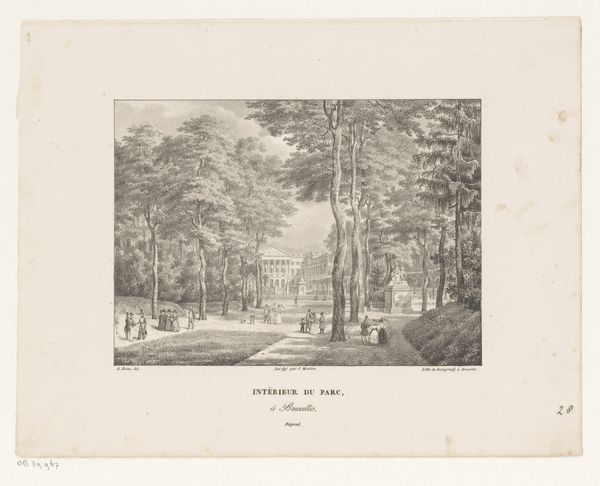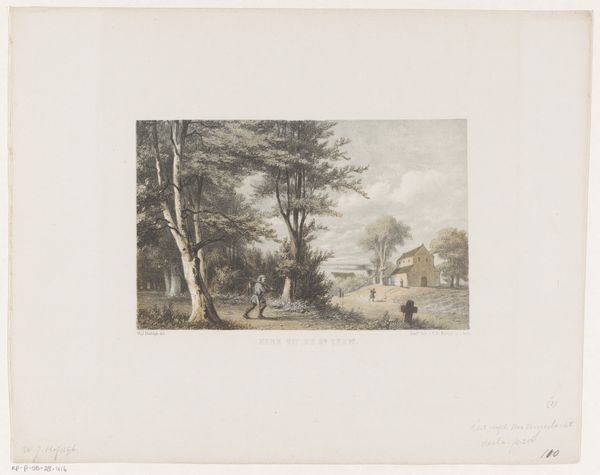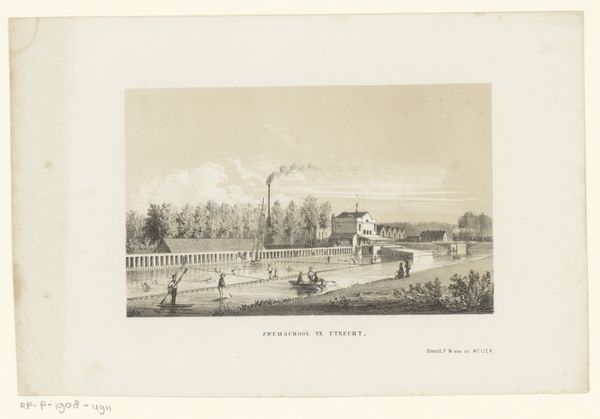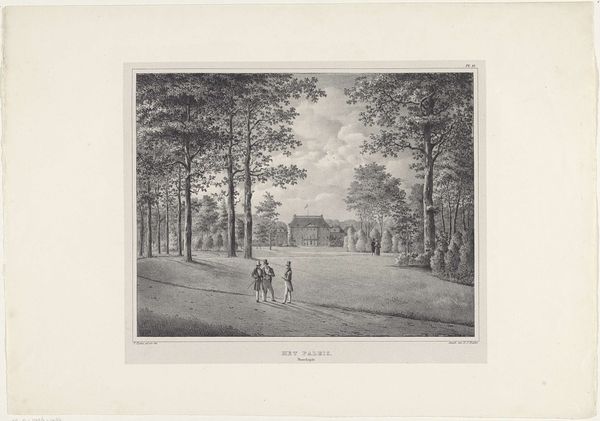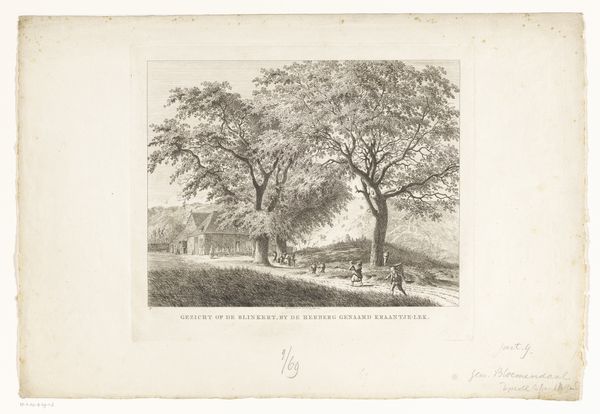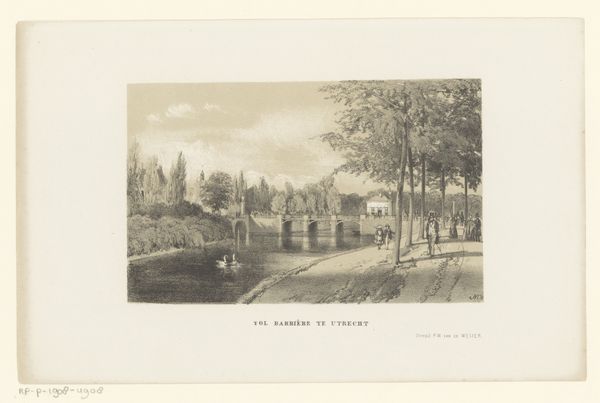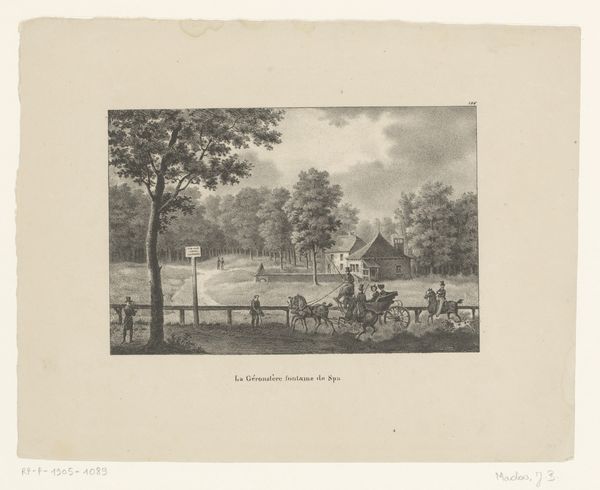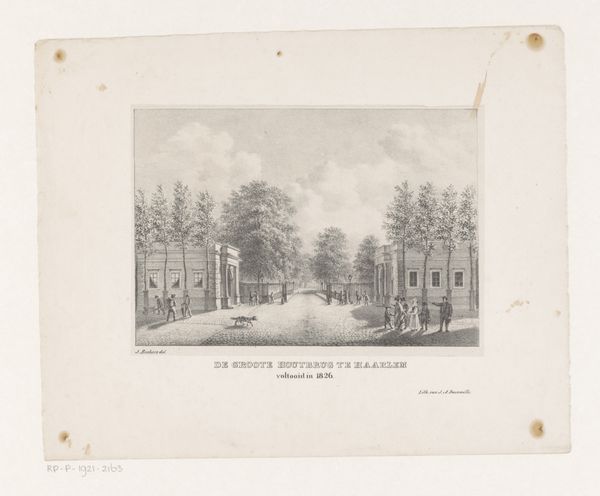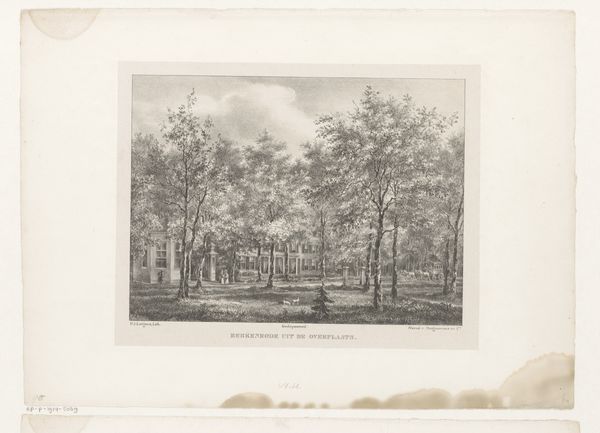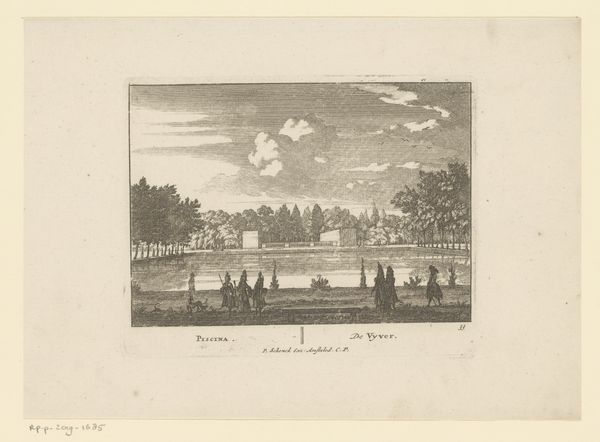
Dimensions: height 155 mm, width 240 mm
Copyright: Rijks Museum: Open Domain
Editor: Here we have Pieter Wilhelmus van de Weijer's "View of the Maliebaan in Utrecht," created in 1856, rendered in pencil. It strikes me as incredibly peaceful. I’m curious, what stands out to you about this work? Curator: From a materialist perspective, it’s interesting to consider the accessibility of pencil drawing as a medium in the mid-19th century. Unlike painting with oils, which required extensive resources, pencils and paper were relatively inexpensive, enabling a broader segment of the population to engage in artistic production. Think of this artwork in its historical context; this landscape embodies emerging romantic ideals, while the production itself mirrors the democratization of art linked to industrial shifts. Do you notice how the composition mirrors class divisions? Editor: Yes, I see what you mean. The wide boulevard, with its fashionable strollers, seems designed for leisure, suggesting a privileged class. Curator: Exactly! The artist's choice of print medium furthers that accessibility. This work challenges the concept of art as solely the domain of the wealthy or classically trained. Mass reproduction facilitates consumption, even if it creates different social classes. How do you perceive the labor involved in creating this print compared to an oil painting? Editor: It seems like printmaking would allow for more standardized labor than, say, hand-ground pigments and individualized brushstrokes. Perhaps this challenges the unique aura we typically associate with artwork. Curator: Precisely. Weijer’s work allows us to consider how technological advances and shifting social structures influenced artistic production and consumption. This artwork questions conventional artistic hierarchies. Editor: It's fascinating how a simple drawing can reveal so much about the means of artistic production in a rapidly changing world! I hadn’t considered the socio-economic implications of artistic materials and labor before.
Comments
No comments
Be the first to comment and join the conversation on the ultimate creative platform.
